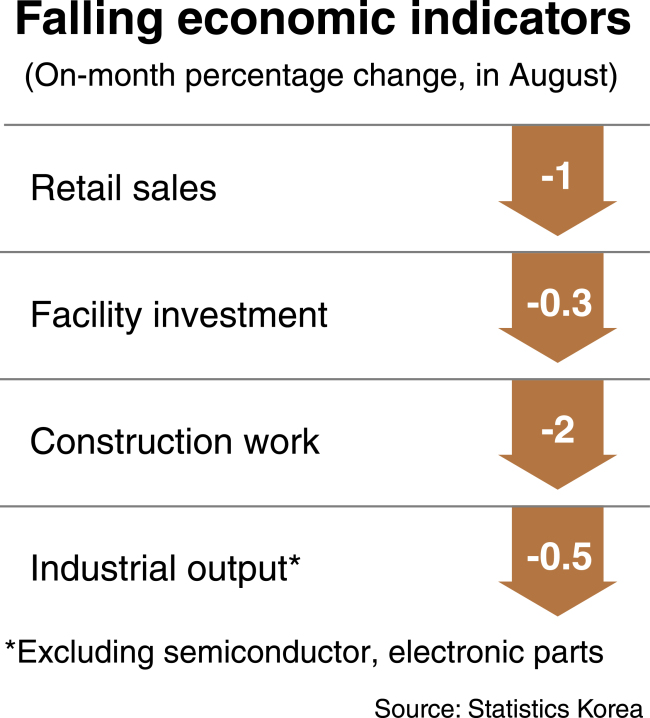Data released last week pointed to the deepening sluggishness of the Korean economy, strengthening the case for readjusting the new administration’s policy focused on expanding welfare benefits and guaranteeing higher wages and a more secure job status for employees.
Retail sales and facility investment fell 1 percent and 0.3 percent, respectively, from a month earlier in August, according to the data from Statistics Korea.
Accomplished construction work also recorded an on-month drop of 2 percent in August.
The simultaneous downturn in the three key indicators of domestic demand was the first in 11 months.
Overall industrial output stayed unchanged from the month before in August. But it was estimated to fall 0.5 percent, excluding the production of semiconductors and electronic components, which rose 12.4 percent and 5.5 percent on-month, respectively.
The average factory operation rate remained at 72 percent in August, down from 73.1 percent in the previous month, with inventories of manufacturing firms increasing 2.1 percent.
Separate data released earlier by the statistics office showed the on-month increase in the number of employees stood at 212,000 in August, the lowest in 4 1/2 years. Youth unemployment reached 9.4 percent, the highest for the month since 1999, during the aftermath of a foreign exchange crisis.


